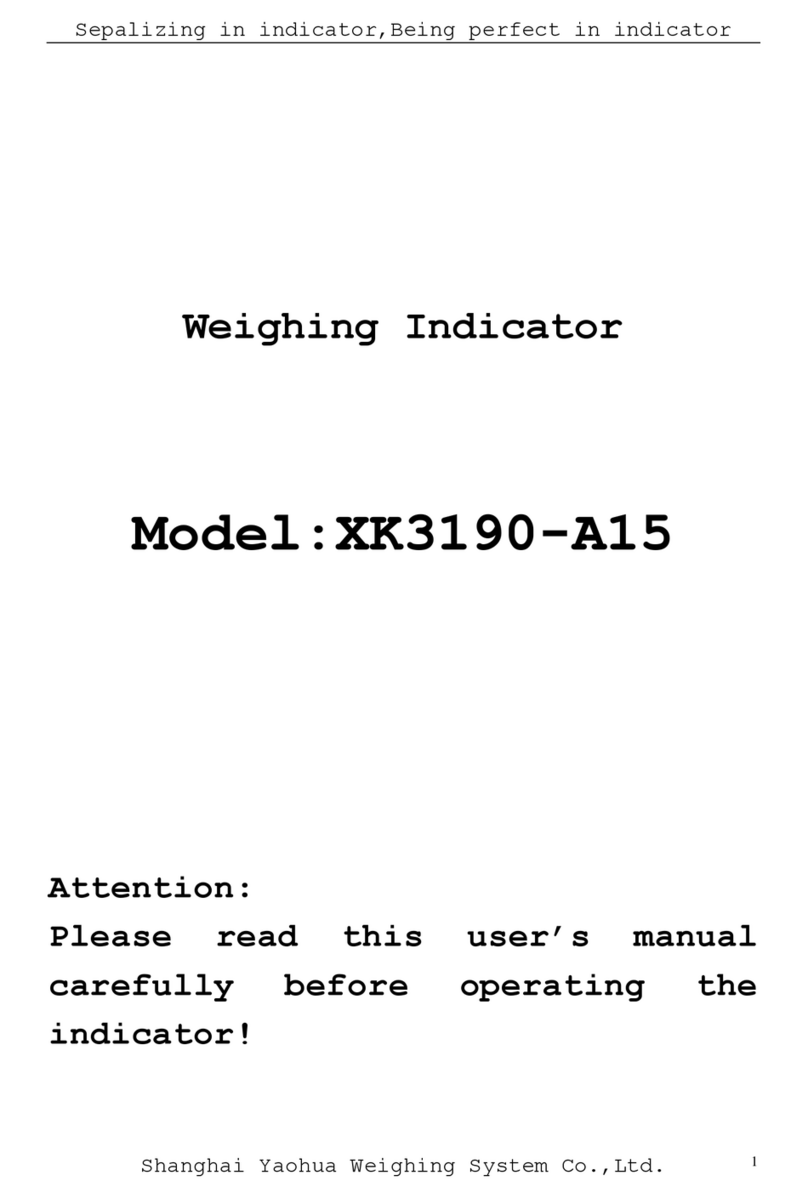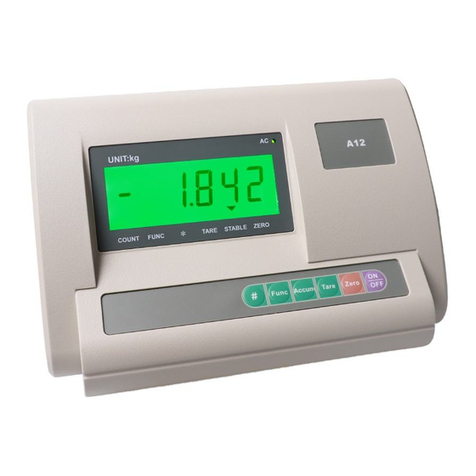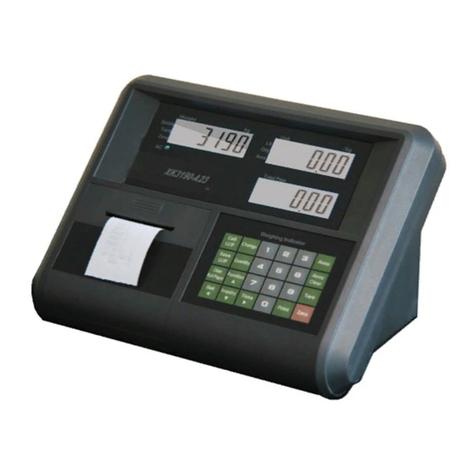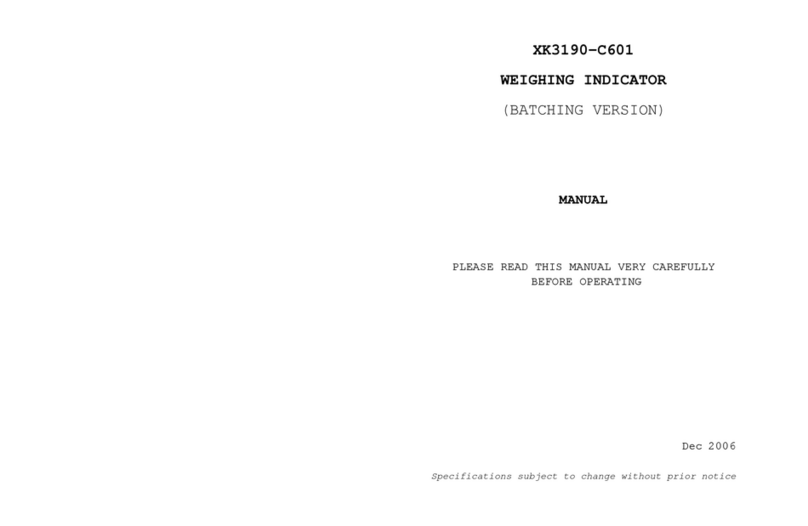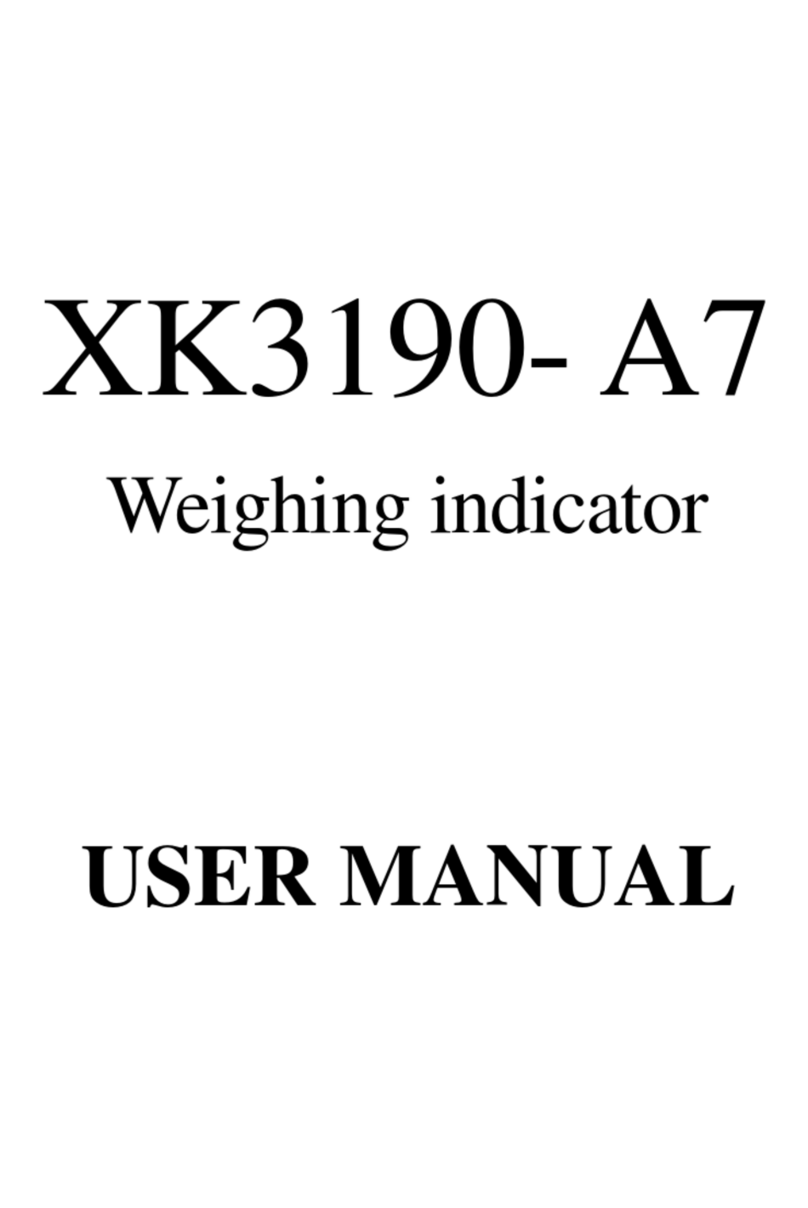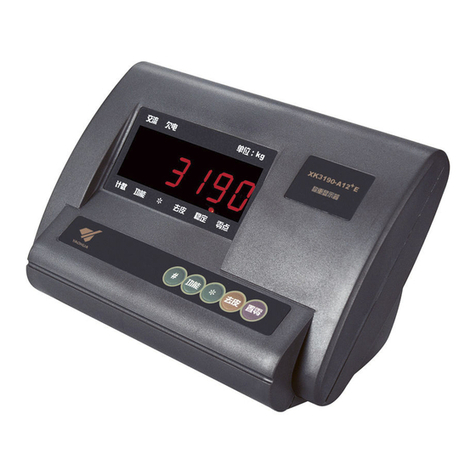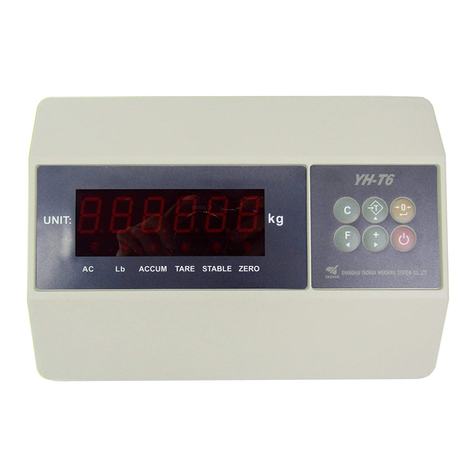X K 3 1 9 0-C 602
than the weight of material delivered by the feeder since part of the delivered material is still in the
air and has not reached to the load carrier. To obtain the predetermined material weight, it is
necessary to turn off the feeder in advance. The weight involved in the leading is called a lead. For
C602, “self-correction of lead” function can be activated to ensure the accuracy of final weight.
Gradual feed When the feeding to quantitative scale is finished, the material weight is less than
the predetermined weight and the difference is beyond the tolerance, the indicator can start slow
feeding repeatedly and shortly to make the loaded weight approach to the predetermined value.
Add signal is short for “adding input signal is allowed”. Only when the add signal is valid can the
C602 output feeding control signal.
Discharge signal is short for “discharge input signal is allowed”. Only when discharge signal is
valid can C602 output discharge control signal.
Zero zone is the weight limit in additive scale which is used to judge whether the material in
hopper is completely discharged.
1. During discharging, it is deemed completed when the indicator shows the gross weight is
below zero zone.
2. The indicator can print and totalize only when the material weight is above zero zone.
For catchweigher, the self-control catchweigher can start weighing process only when the
weight signal is above zero zone and can print and sum when the calculation result of material
weight is above zero zone.
Additive scale is the quantitative scale used for batching control of added material weight in load
carrier (like hopper etc), for example, the hopper-type quantitative packing scale.
Subtracting scale is the quantitative scale used for batching control of subtracted material in the
load carrier (like hopper). It is also called weight loss scale.
Negative scale is the indicator to measure the weight removed from the load carrier. Subtracting
scale works as negative scale during feeding.
Channel is the range of object weight. C602 indicator can be divided into 5 weight ranges, also
called 5 channels. Each channel has 1 corresponding switch output signal.
Out-of-tolerance treatment When it is valid and the materials fed by quantitative scale is less
than the lower limit of batching value (subtracting tolerance of batching value), while there is no
gradual feed function, or when the fed material is more than the upper limit of set value (additive
tolerance of batching value), the quantitative scale will stop running, waiting for manual treatment.
When the weight meets the tolerance requirement, the quantitative scale will resume the
interrupted work.
Peak holding When the catchweigher captures an object weight, it will be displayed until the
